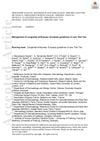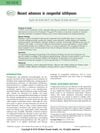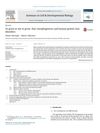TLDR Netherton syndrome can cause severe dehydration, infections, and growth issues in infants.
Netherton syndrome is a rare genetic disorder marked by congenital ichthyosis, immune dysregulation, and scalp anomalies. A 1-month-old male with severe hypernatremia (186 mg/dL) and failure to thrive was diagnosed with Netherton syndrome, confirmed by the presence of "invaginated trichuriasis." The condition results from a mutation in the SPINK5 gene, leading to a loss of LEKTI protein and severe skin barrier defects. Early life complications include hypernatremic dehydration, severe infections, and growth retardation.
 66 citations
,
June 2018 in “British Journal of Dermatology”
66 citations
,
June 2018 in “British Journal of Dermatology” European guidelines recommend regular eye and ear exams, skin care, vitamin D supplements, and cautious use of medications for managing congenital ichthyoses.
264 citations
,
October 1958 in “Archives of Dermatology” A 4-year-old girl has a rare hair condition causing fragile, short hair.
 November 2019 in “Harper's Textbook of Pediatric Dermatology”
November 2019 in “Harper's Textbook of Pediatric Dermatology” The document is a detailed medical reference on skin and genetic disorders.
 January 2022 in “Dermatology Review”
January 2022 in “Dermatology Review” Higher IL-31 levels are linked to worse itching in chronic kidney disease patients.
 10 citations
,
July 2015 in “Current opinion in pediatrics, with evaluated MEDLINE/Current opinion in pediatrics”
10 citations
,
July 2015 in “Current opinion in pediatrics, with evaluated MEDLINE/Current opinion in pediatrics” New genes linked to ichthyosis were found, but there's still no cure; treatment options are improving.
72 citations
,
March 2023 in “Biomolecules” Dupilumab effectively treats various inflammatory skin diseases beyond its initial use for atopic dermatitis.
 43 citations
,
December 2013 in “Seminars in Cell & Developmental Biology”
43 citations
,
December 2013 in “Seminars in Cell & Developmental Biology” Genetic mutations can cause hair growth disorders by affecting key genes and signaling pathways.





